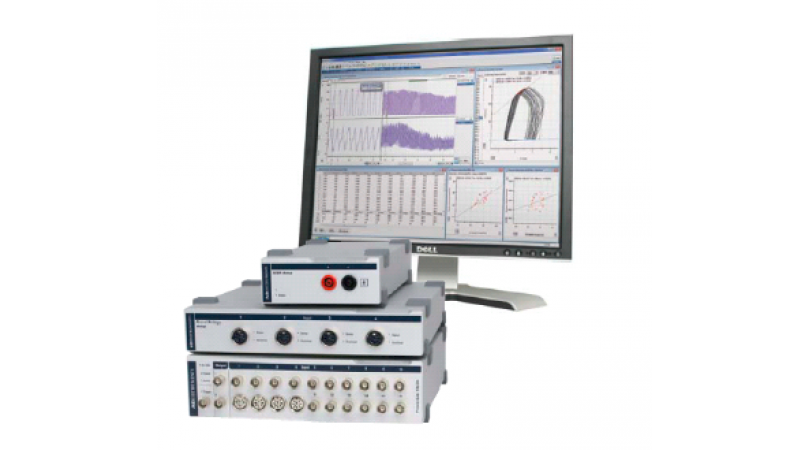【限时资源,期刊全文】Applied Psycholinguistics(《应用心理语言学》)2019年6期59篇论文
2038 阅读 11 下载 2020-06-24 18:13:59 上传 34.59 MB
本期推送的是国际权威期刊Applied Psycholinguistics(《应用心理语言学》)2019年全6期(Volume 40, Issue 1-6)的59篇论文,各位可在三天内点击文末附件下载(下载后如遇个别PDF文件无法打开的情况,
Applied Psycholinguistics(《应用心理语言学》)2019年全6期59篇论文
期刊主编:Rachel Hayes-Harb
资料整理:张明辉(微信:zhangxiaojian160408)
(分享资源3天有效,3天后请加小编微信索取)

| 刊名 | 卷号 | 期号 | 文章号 | 论文题目 |
| Applied Psycholinguistics | Vol 40 | Issue 1 | Article 01 | Adaptation to syntactic structures in native and nonnative sentence comprehension |
| Applied Psycholinguistics | Vol 40 | Issue 1 | Article 02 | Impact of language dominance on phonetic transfer in Cantonese–English bilingual language switching |
| Applied Psycholinguistics | Vol 40 | Issue 1 | Article 03 | Japanese EFL learners’ sentence processing of conceptual plurality: An analysis focusing on reciprocal verbs |
| Applied Psycholinguistics | Vol 40 | Issue 1 | Article 04 | How much do visual cues help listeners in perceiving accented speech? |
| Applied Psycholinguistics | Vol 40 | Issue 1 | Article 05 | How conceptualizing influences fluency in first and second language speech production |
| Applied Psycholinguistics | Vol 40 | Issue 1 | Article 06 | Context, word, and student predictors in second language vocabulary learning |
| Applied Psycholinguistics | Vol 40 | Issue 1 | Article 07 | Adults’ sensitivity to graphotactic differences within the English vocabulary |
| Applied Psycholinguistics | Vol 40 | Issue 1 | Article 08 | The role of aptitude in second language segmental learning: The case of Japanese learners’ English /ɹ/ pronunciation attainment in classroom settings |
| Applied Psycholinguistics | Vol 40 | Issue 1 | Article 09 | Signatures of automaticity during practice: Explicit instruction about L1 processing routines can improve L2 grammatical processing |
| Applied Psycholinguistics | Vol 40 | Issue 2 | Article 01 | Cross-script transfer of word reading fluency in a mixed writing system: Evidence from a longitudinal study in Japanese |
| Applied Psycholinguistics | Vol 40 | Issue 2 | Article 02 | Indexing effects of phonological representational strength on rapid naming using rime neighborhood density |
| Applied Psycholinguistics | Vol 40 | Issue 2 | Article 03 | Auditory statistical learning in children: Novel insights from an online measure |
| Applied Psycholinguistics | Vol 40 | Issue 2 | Article 04 | The development of a measure of root awareness to account for reading performance in the Arabic language: A development and validation study |
| Applied Psycholinguistics | Vol 40 | Issue 2 | Article 05 | Contributions of vocabulary and discourse-level skills to reading comprehension among Chinese elementary school children |
| Applied Psycholinguistics | Vol 40 | Issue 2 | Article 06 | The processing of dialectal variants: Further insight from French |
| Applied Psycholinguistics | Vol 40 | Issue 2 | Article 07 | Native-like processing of prominence cues in L2 written discourse comprehension: Evidence from font emphasis |
| Applied Psycholinguistics | Vol 40 | Issue 2 | Article 08 | The role of literariness in second language incidental vocabulary acquisition |
| Applied Psycholinguistics | Vol 40 | Issue 2 | Article 09 | Staying rooted: Spelling performance in children with dyslexia |
| Applied Psycholinguistics | Vol 40 | Issue 2 | Article 10 | Verbal fluency in relation to reading ability in students with and without dyslexia |
| Applied Psycholinguistics | Vol 40 | Issue 2 | Article 11 | Learning nouns and verbs in a foreign language: The role of gestures |
| Applied Psycholinguistics | Vol 40 | Issue 2 | Article 12 | Orthographic processing and children’s word reading |
| Applied Psycholinguistics | Vol 40 | Issue 2 | Article 13 | Normative ratings for 536 action-related sentences in Spanish |
| Applied Psycholinguistics | Vol 40 | Issue 2 | Article 14 | How does language proficiency affect children’s iconic gesture use? |
| Applied Psycholinguistics | Vol 40 | Issue 2 | Article 15 | Japanese co-occurrence restrictions influence second language perception |
| Applied Psycholinguistics | Vol 40 | Issue 3 | Article 01 | Short-term memory problems for phonemes’ serial order in adults with dyslexia: Evidence from a different analysis of the Nonword repetition task |
| Applied Psycholinguistics | Vol 40 | Issue 3 | Article 02 | Beyond accuracy: Heritage speakers’ performance on two kinds of acceptability judgment tasks |
| Applied Psycholinguistics | Vol 40 | Issue 3 | Article 03 | The associations between cognitive ability and L2 development under five different instructional conditions |
| Applied Psycholinguistics | Vol 40 | Issue 3 | Article 04 | Grain size effects in rime judgment across literacy development in German |
| Applied Psycholinguistics | Vol 40 | Issue 3 | Article 05 | Pause behavior within reformulations and the proficiency level of second language learners of English |
| Applied Psycholinguistics | Vol 40 | Issue 3 | Article 06 | Morphological awareness and reading achievement in university students |
| Applied Psycholinguistics | Vol 40 | Issue 3 | Article 07 | Unraveling the complexity of the relations of metalinguistic skills to word reading with struggling adult readers: Shared, independent, and interactive effects |
| Applied Psycholinguistics | Vol 40 | Issue 3 | Article 08 | The effect of speech rhythm and speaking rate on assessment of pronunciation in a second language |
| Applied Psycholinguistics | Vol 40 | Issue 4 | Article 01 | The development of English tense and agreement morphology in Welsh–English bilingual children with and without specific language impairment |
| Applied Psycholinguistics | Vol 40 | Issue 4 | Article 02 | Patterns of educational achievement among groups of immigrant children in Denmark emerge already in preschool second-language and preliteracy skills |
| Applied Psycholinguistics | Vol 40 | Issue 4 | Article 03 | The development of vocabulary and morphological awareness: A longitudinal study with college EFL students |
| Applied Psycholinguistics | Vol 40 | Issue 4 | Article 04 | Orthography and speech production in children with good or poor reading skills |
| Applied Psycholinguistics | Vol 40 | Issue 4 | Article 05 | Mandarin–English speaking bilingual and Mandarin speaking monolingual children’s comprehension of relative clauses |
| Applied Psycholinguistics | Vol 40 | Issue 4 | Article 06 | “It is alive!” Evidence for animacy effects in semantic categorization and lexical decision |
| Applied Psycholinguistics | Vol 40 | Issue 4 | Article 07 | Frequency effects on first and second language compositional phrase comprehension and production |
| Applied Psycholinguistics | Vol 40 | Issue 4 | Article 08 | Long-term outcomes for bilinguals in minority language contexts: Welsh–English teenagers’ performance on measures of grammatical gender and plural morphology in Welsh |
| Applied Psycholinguistics | Vol 40 | Issue 4 | Article 09 | Morphological awareness and word-level reading in early and middle elementary school years |
| Applied Psycholinguistics | Vol 40 | Issue 5 | Article 01 | Exploring multiple constraints on second language development of English polysemous phrasal verbs |
| Applied Psycholinguistics | Vol 40 | Issue 5 | Article 02 | Testing the deficient processing account of the spacing effect in second language vocabulary learning: Evidence from eye tracking |
| Applied Psycholinguistics | Vol 40 | Issue 5 | Article 03 | Gesture in contexts of scopal ambiguity: Negation and quantification in English |
| Applied Psycholinguistics | Vol 40 | Issue 5 | Article 04 | Frequency effects on spelling in Hebrew-speaking younger and older adults |
| Applied Psycholinguistics | Vol 40 | Issue 5 | Article 05 | Predicting bilingual preschoolers’ patterns of language development: Degree of non-native input matters |
| Applied Psycholinguistics | Vol 40 | Issue 5 | Article 06 | Phonetic and phonological effects of tonal information in the segmentation of Korean speech: An artificial-language segmentation study |
| Applied Psycholinguistics | Vol 40 | Issue 5 | Article 07 | Syntactic development in early foreign language learning: Effects of L1 transfer, input, and individual factors |
| Applied Psycholinguistics | Vol 40 | Issue 5 | Article 08 | Linguistic interdependence of receptive vocabulary skills in emergent bilingual preschool children: Exploring a factor-dependent approach |
| Applied Psycholinguistics | Vol 40 | Issue 5 | Article 09 | Knowledge of letter sounds in children from England |
| Applied Psycholinguistics | Vol 40 | Issue 5 | Article 10 | Lying and perception of lies by bilingual speakers |
| Applied Psycholinguistics | Vol 40 | Issue 6 | Article 01 | The benefits of abstract word training on productive vocabulary knowledge among second language learners |
| Applied Psycholinguistics | Vol 40 | Issue 6 | Article 02 | Evaluating Korean learners’ English rhythm proficiency with measures of sentence stress |
| Applied Psycholinguistics | Vol 40 | Issue 6 | Article 03 | Incidental and explicit learning of L2 derivational morphology and the nature of acquired knowledge |
| Applied Psycholinguistics | Vol 40 | Issue 6 | Article 04 | Resolving homography: The role of post-homograph context in reading aloud ambiguous sentences in Hebrew |
| Applied Psycholinguistics | Vol 40 | Issue 6 | Article 05 | A systematic review and meta-analysis of studies on metaphor comprehension in individuals with autism spectrum disorder: Do task properties matter? |
| Applied Psycholinguistics | Vol 40 | Issue 6 | Article 06 | Written training tasks are better than oral training tasks at improving L2 learners’ speech production |
| Applied Psycholinguistics | Vol 40 | Issue 6 | Article 07 | Semantic integration declines independently of working memory in aging |
| Applied Psycholinguistics | Vol 40 | Issue 6 | Article 08 | The acquisition of phonological alternations: The case of the Mandarin tone sandhi process |
所需积分:0 分
限期开放已结束
表情
图片
附件














